Those of you who’ve been with me awhile may well remember my explorations of the four famed pastas of Rome, and their family tree connections. A quick reference back – gricia, cacio e pepe, carbonara, amatriciana.
In form the base is cheese and pepper, cacio e pepe. Add guanciale and you have gricia (albeit historically, it started here, and it was the lack of guanciale that created cacio e pepe). To that you bascially either add eggs for carbonara or tomatoes for amatriciana.
Sicily, it turns out, has a similar pasta family tree. Here, we start with the muddica. Basically, breadcrumbs. But more specifically, what you do with the breadcrumbs, which is to fry them in olive oil until they’re browned, usually with garlic and black pepper, and sometimes with fennel seeds. Personally, I think they should always have fennel seeds. These were, simply, an economical substitute for aged grating cheeses, but somewhere along the line became the tradition and pride of the pasta family. Unlike the four Romans, the four dishes here all use the same noodle – bucatini.
Now, I’m going to admit to not having bothered with the most basic – Bucatini con la muddica. Literally nothing more than the cooked pasta tossed with these fried breadcrumbs. It’s not interesting enough, and other than a bite, I wouldn’t really care to eat a whole plate of them, tasty as they are, any more than I want a plate of spaghetti tossed with nothing but butter or olive oil.
Let’s move on to our three offshoots of this base. As usual, all of these are prepared for two portions for us for dinner.
I can’t say this is the simplest or the most basic, because they’re all about the same when it comes to level of difficulty. Essentially, they each only have one or two different ingredients. Here, we have, and essential to all three dishes – garlic, pinenuts, sultanas (which get rehydrated in heated white wine, often with a pinch of saffron), and anchovies. This dish, Bucatini c’anciuova e muddica atturrata, is literally bucatini with anchovies and toasted breadcrumbs. What it has different is some tomato paste and extra anchovies.
Sauté the garlic, onion, and anchovies in a little olive oil until golden.
Add the tomato paste and the raisins with their soaking wine, and cook down to basically a paste, toss in the toasted pinenuts.
Add some pasta water and cook until you’ve got a rich sauce.
Add the pasta, toss, and then off the heat, add the muddica.
Eat!
Moving on to our second dish, this one goes by the moniker of Bucatini chi vruoccoli arriminati, which sorta kinda means the pasta with “moving along broccoli” – arriminati is a bit of an oddity here – in classic Italian it means “mixed”, but in local dialect, and spelled arrimi’nati, it means like telling someone to get moving, to go faster, so maybe something like “quick cooked broccoli”. Except, it’s not made with broccoli, it’s made with cauliflower, although most commonly with romanesco, the fractal, green cauliflower…
…but romanesco isn’t in season here right now, and white cauliflower is also commonly used, so, there we have it.
Note, in this case, instead of onion, tomato paste, and extra anchovies, it’s just cauliflower, and a few extra fennel seeds in addition to what’s in the muddica, though that’s probably more individual than classic – as is the lack of onion, which probably should be there, but wasn’t in the recipe of the person who taught me this one, or maybe I just misremember. This one also, generally, doesn’t use saffron in the wine used to soak the raisins – probably because it would do funny things to the color of the romanesco, though it would make the white cauliflower version prettier.
Sauté the cauliflower with the anchovies, garlic, and fennel seeds until lightly golden.
Add your soaked raisins with their liquid.
And, toss in your pasta, toasted pinenuts, and breadcrumbs. This one I like to add a bit more black pepper at the end than what’s in the breadcrumbs, it just, to my mind, needs the extra little kick.
And, finally, the one that’s probably the star of the bunch, Bucatini con le sarde, or “with sardines”. Here, our additions are fennel and fresh sardines (not the canned ones, thank you, though in a pinch, they’d still make a pretty delicious dish). I actually made this one first of all three, so I have the wine and saffron powder separated out before heating them up and adding in the sultanas to soak. Traditionally, this dish uses wild Sardinian fennel, not something I can find in Buenos Aires’ markets, so I’m using “regular” fennel, and, of course, made sure to put fennel seeds in the muddica when frying them up.
I also intensify that flavor by tossing the harder fennel stalks into the pasta water as it heats up, so the pasta itself absorbs it.
Sauté the onion, fennel, garlic, and anchovies together until turning golden.
Add the raisins and their liquid and cook down until thick.
Add the fillets of the fresh sardines and the toasted pinenuts. A little pasta water to add salt and bring it all together.
And, toss the sauce with the pasta, then the muddica, and serve. To make it pretty, garnish it with the fronds from your fennel bulb.
And that’s my story of the quartet of Sicilian bucatini.
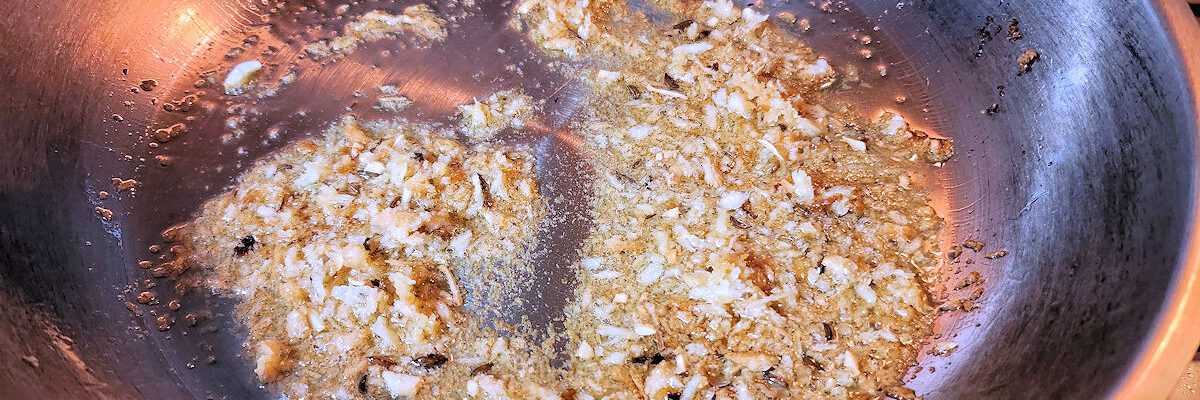
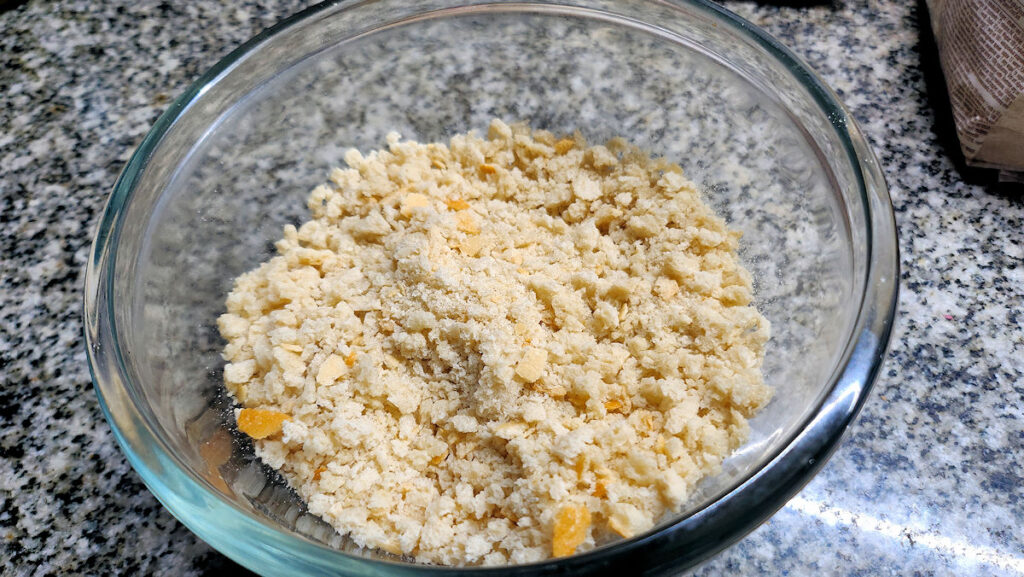
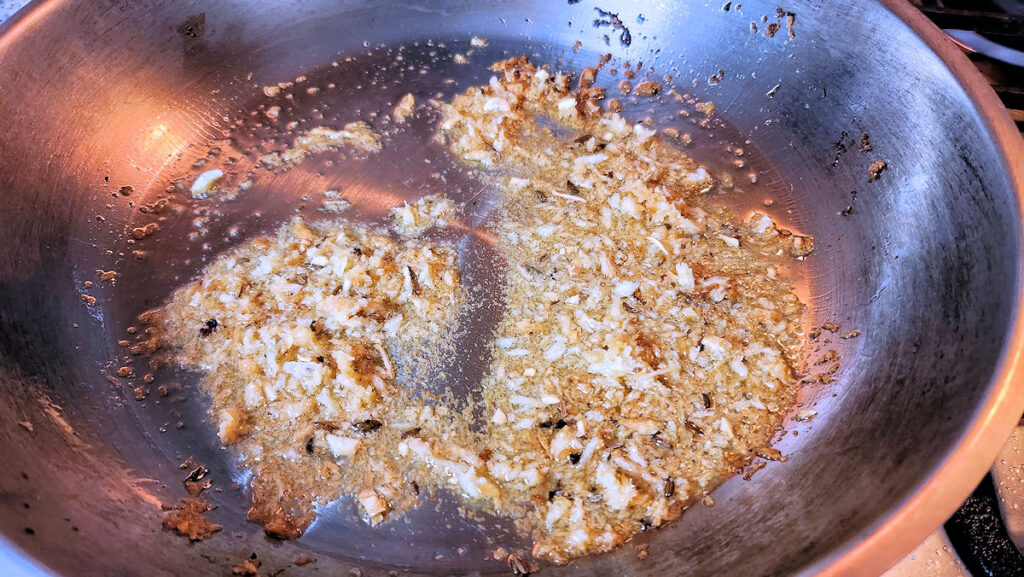
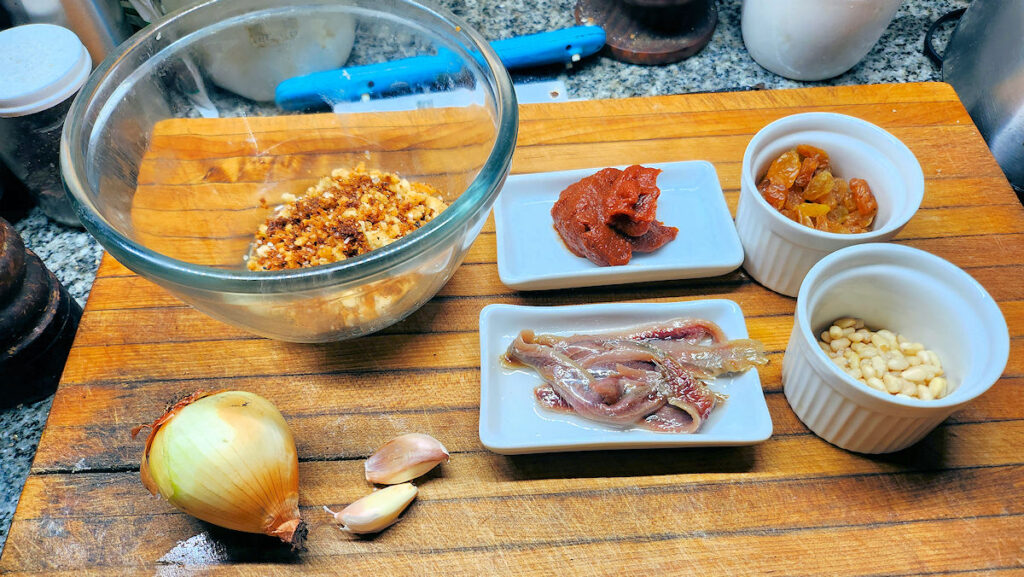
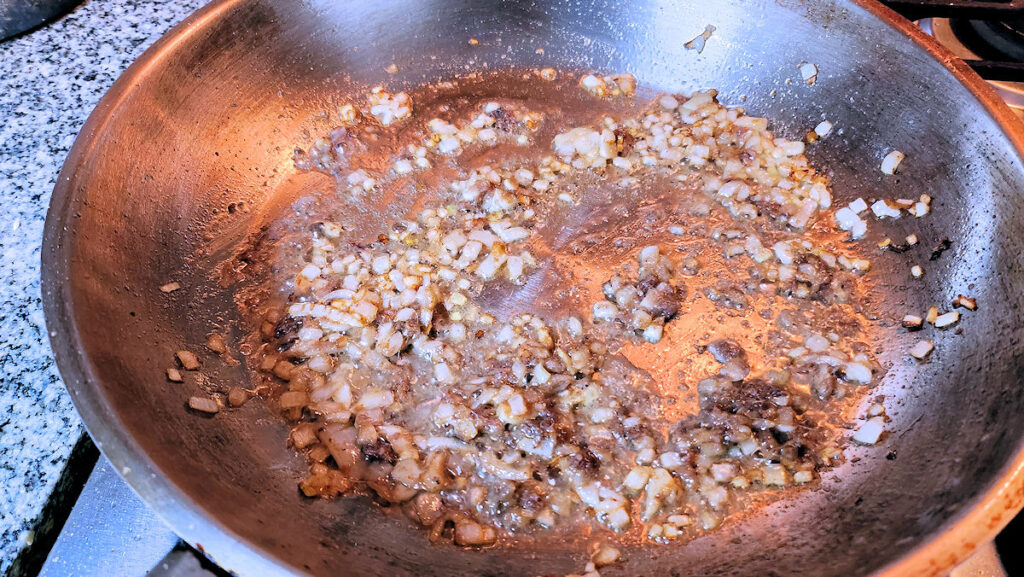
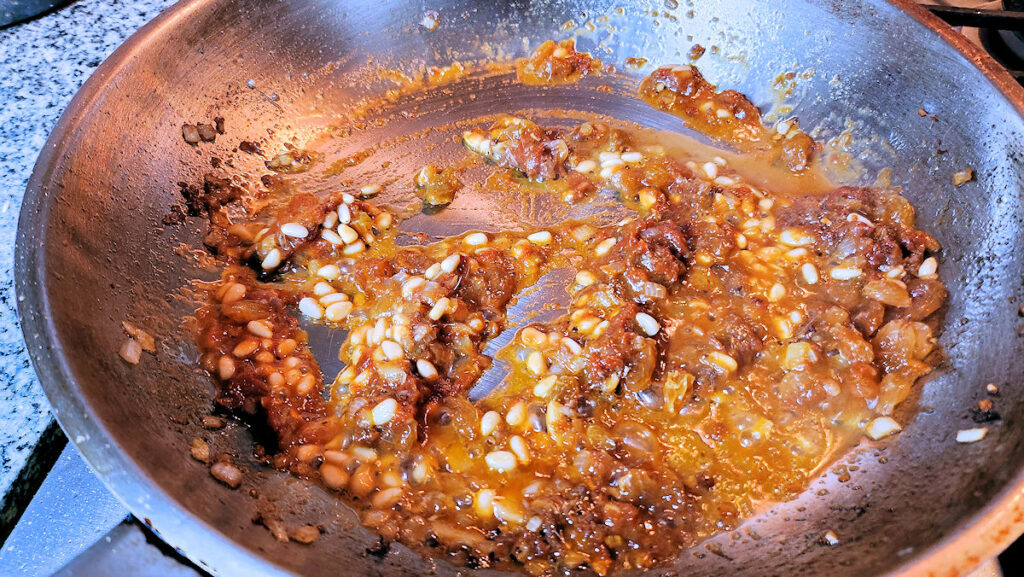
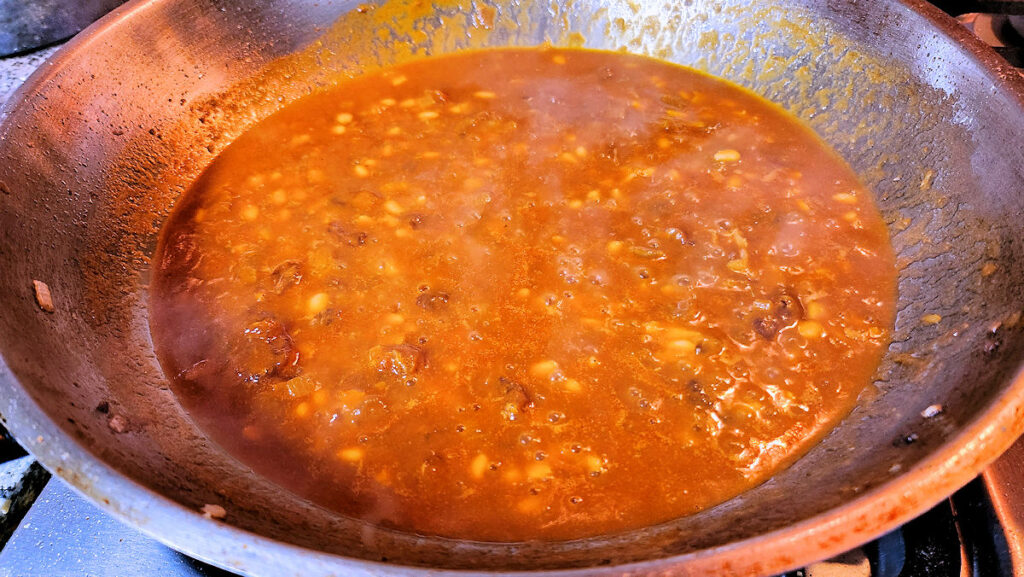
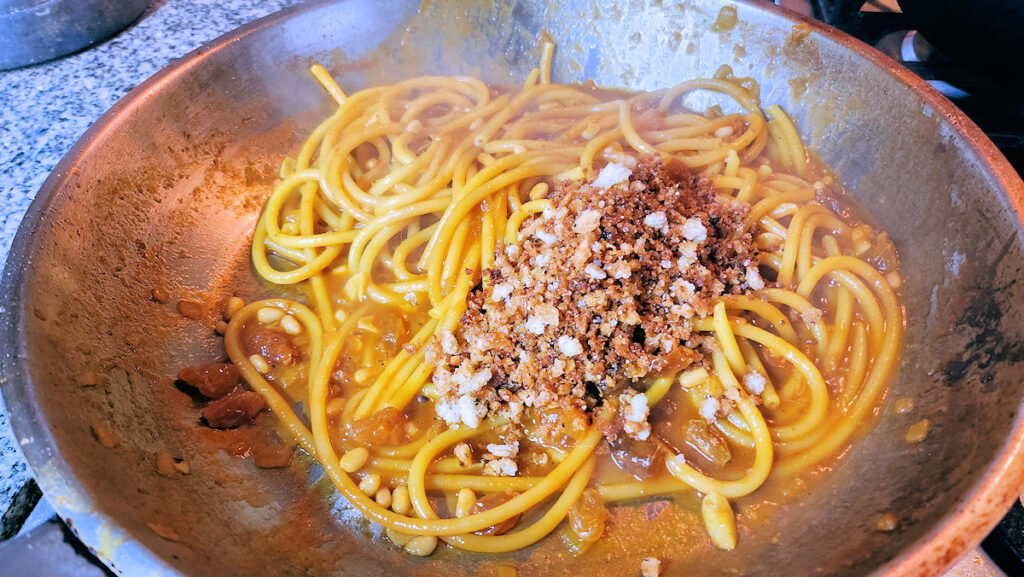
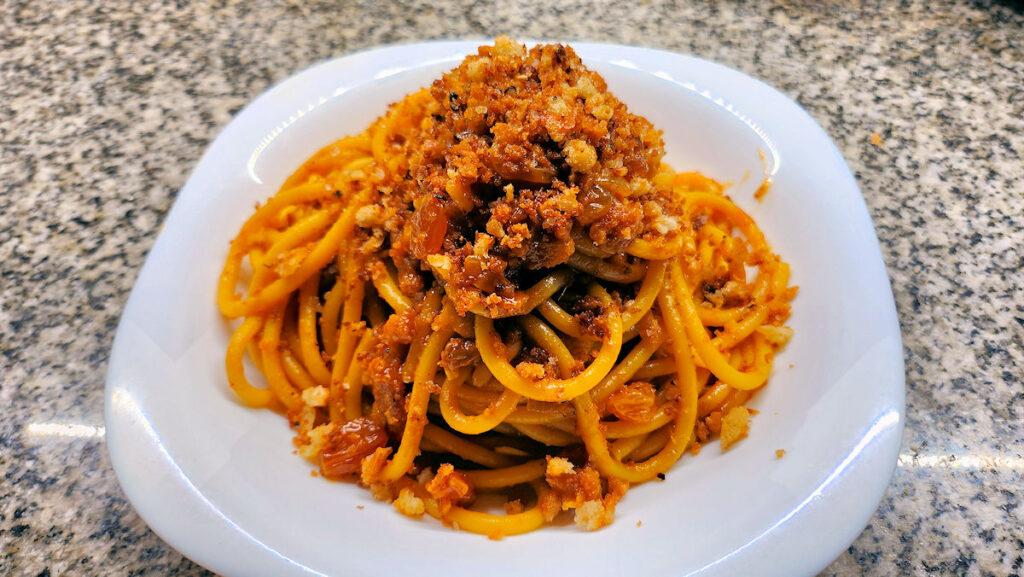
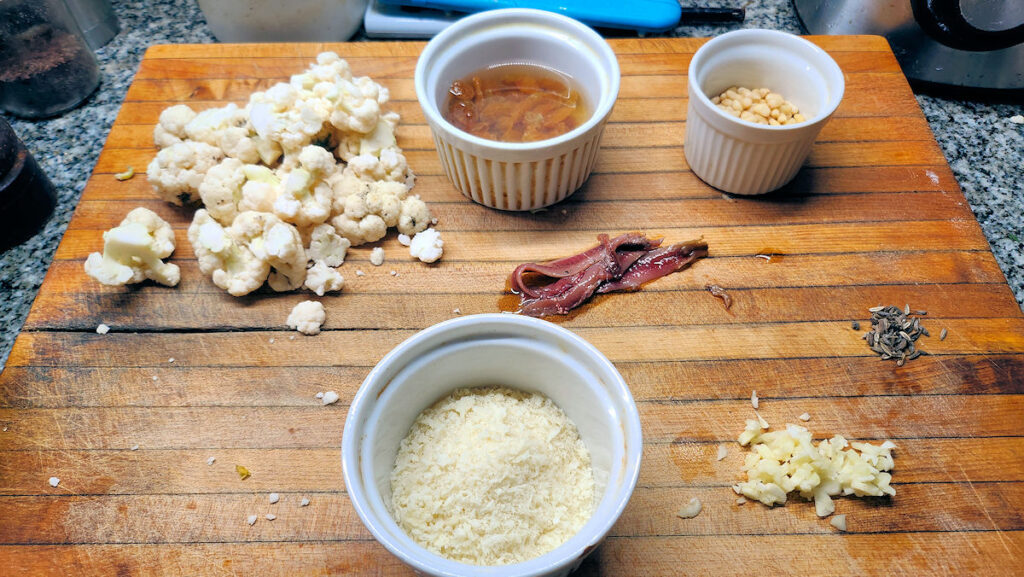
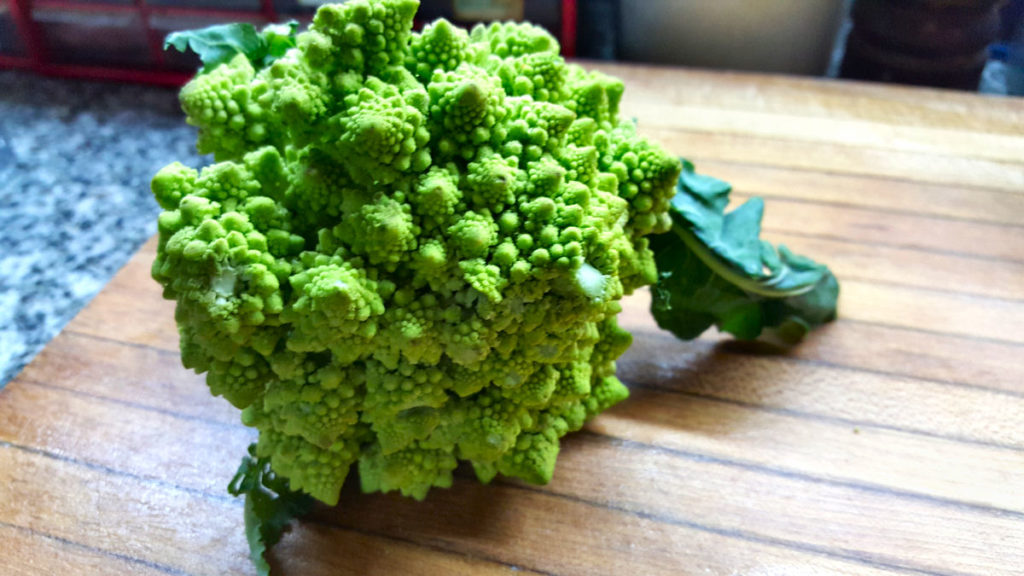
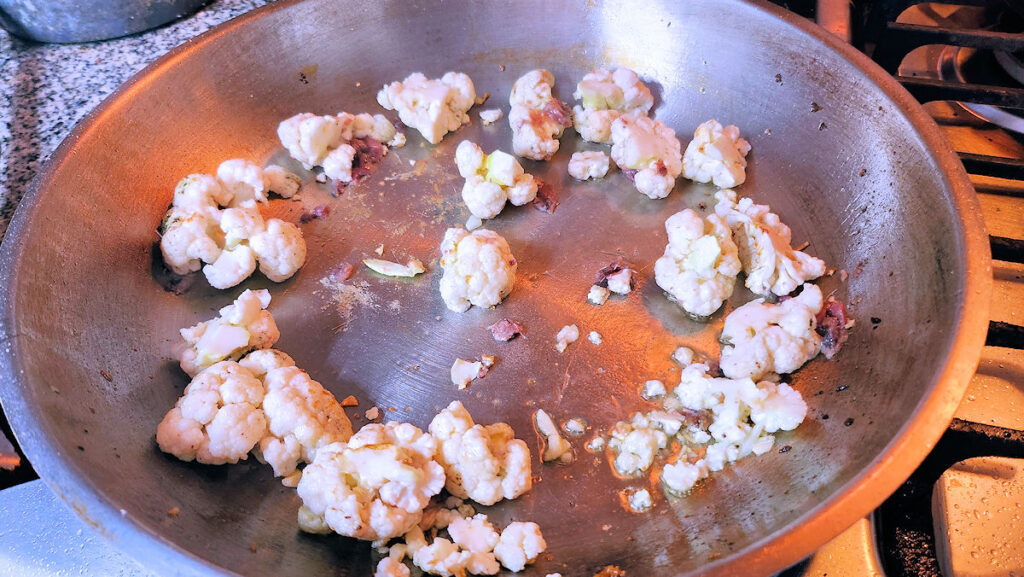
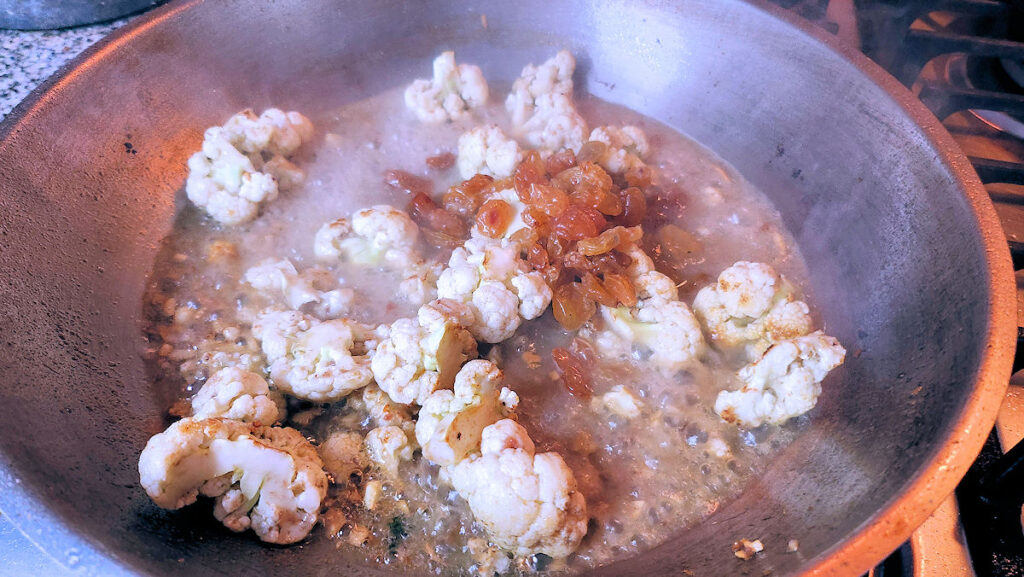
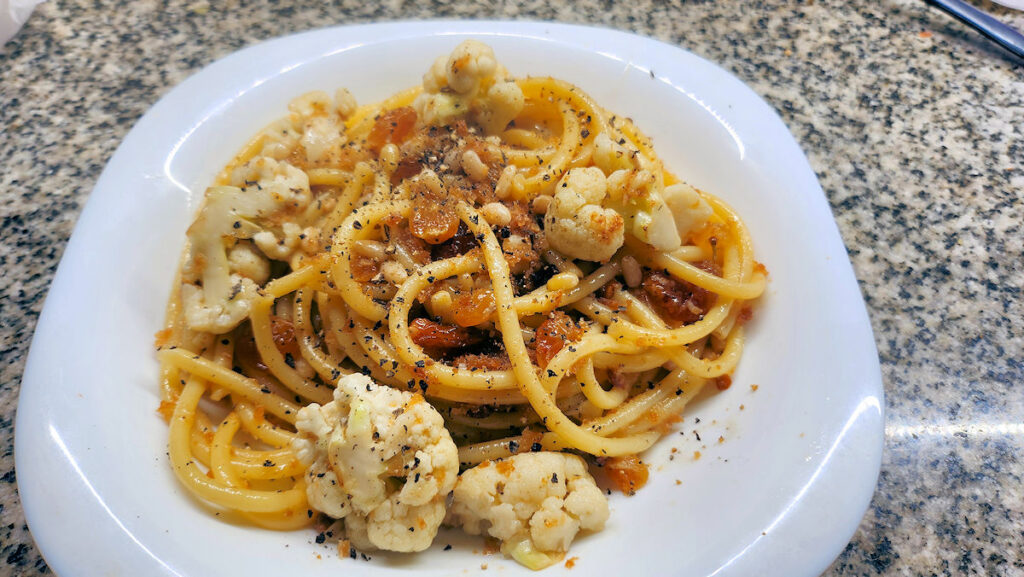
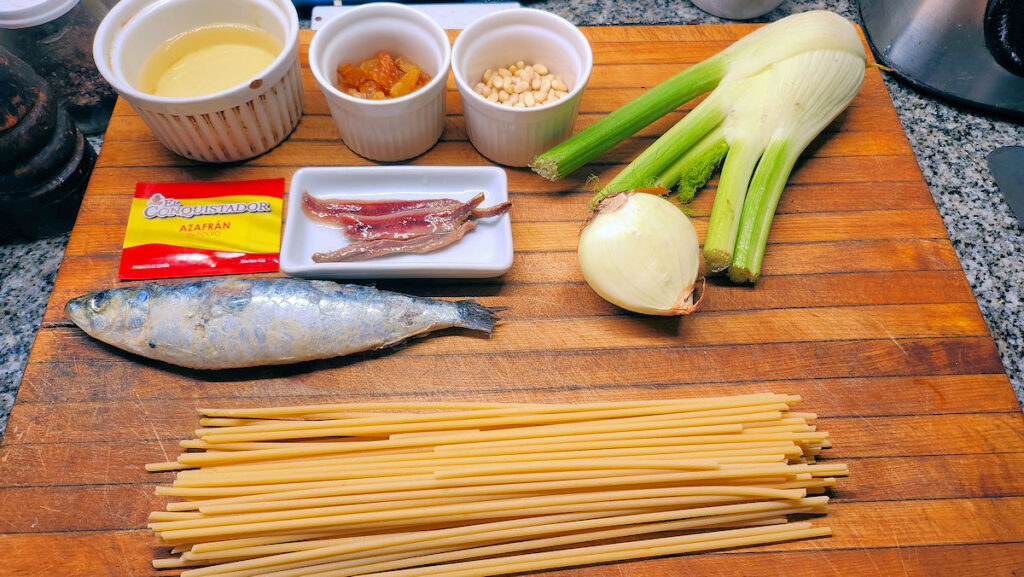
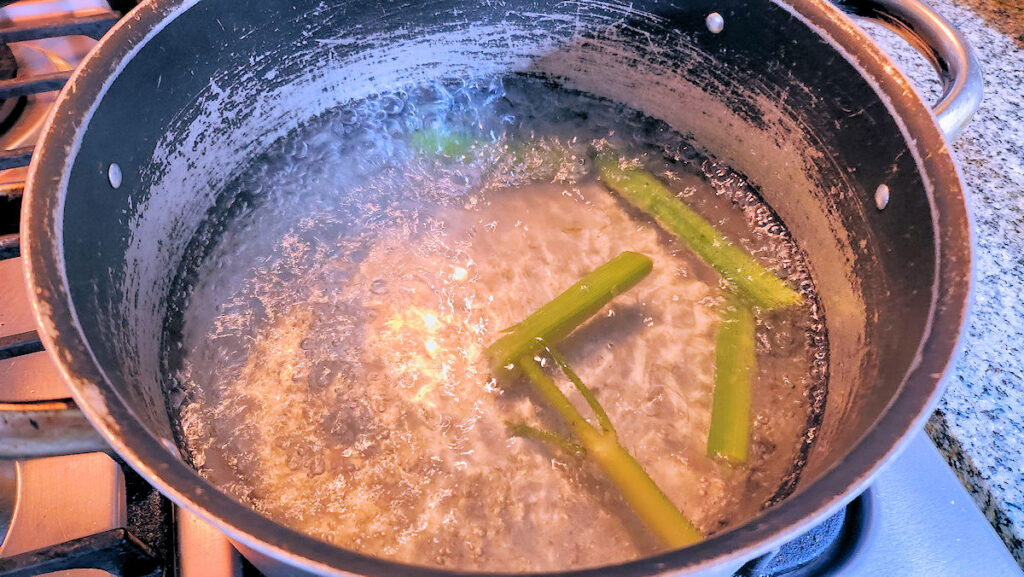
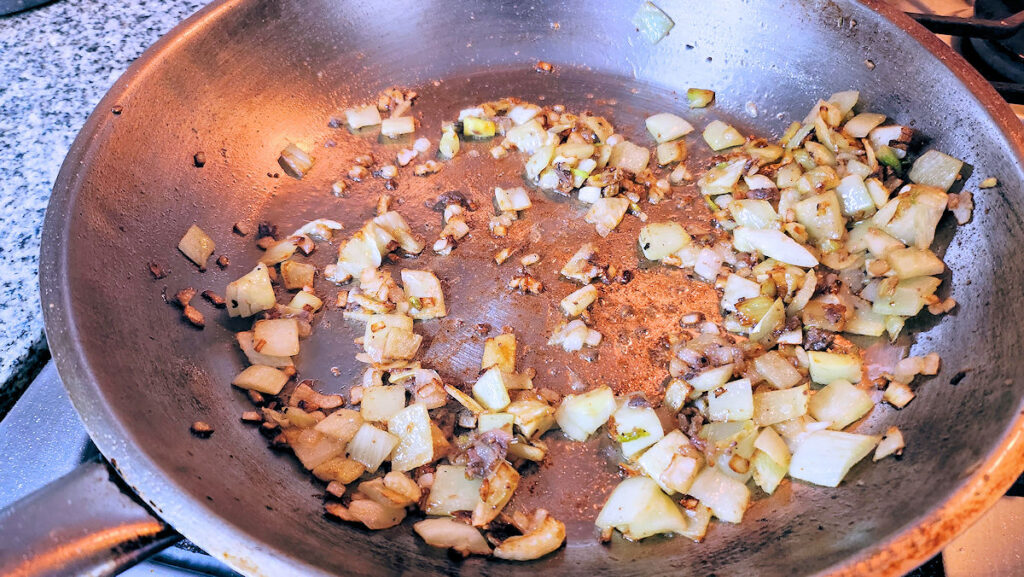
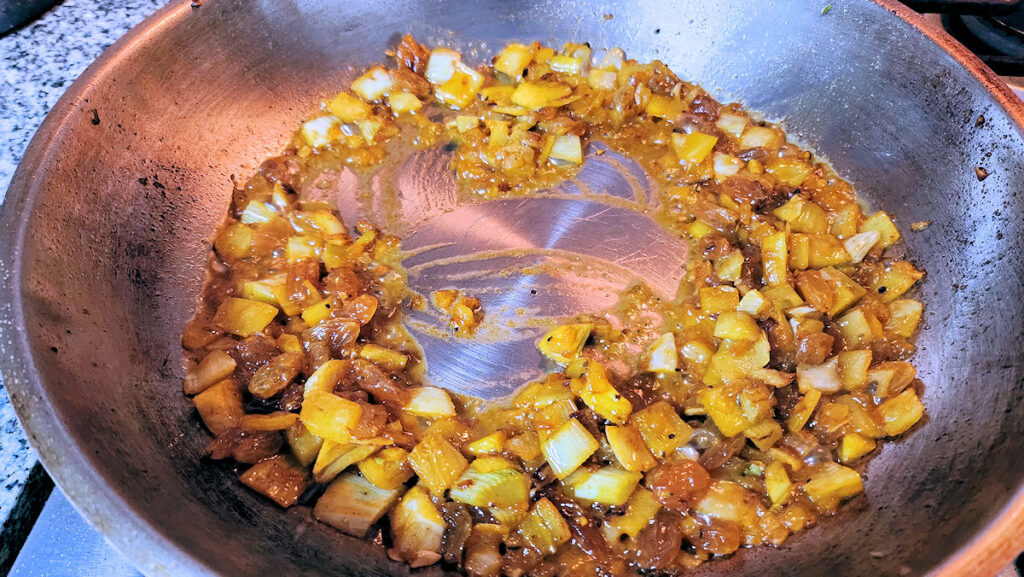
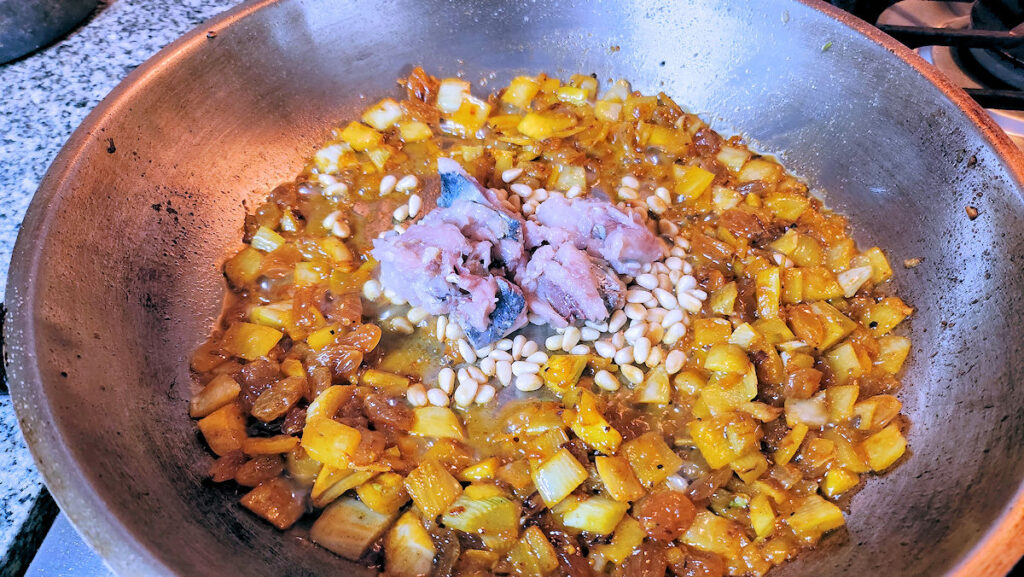
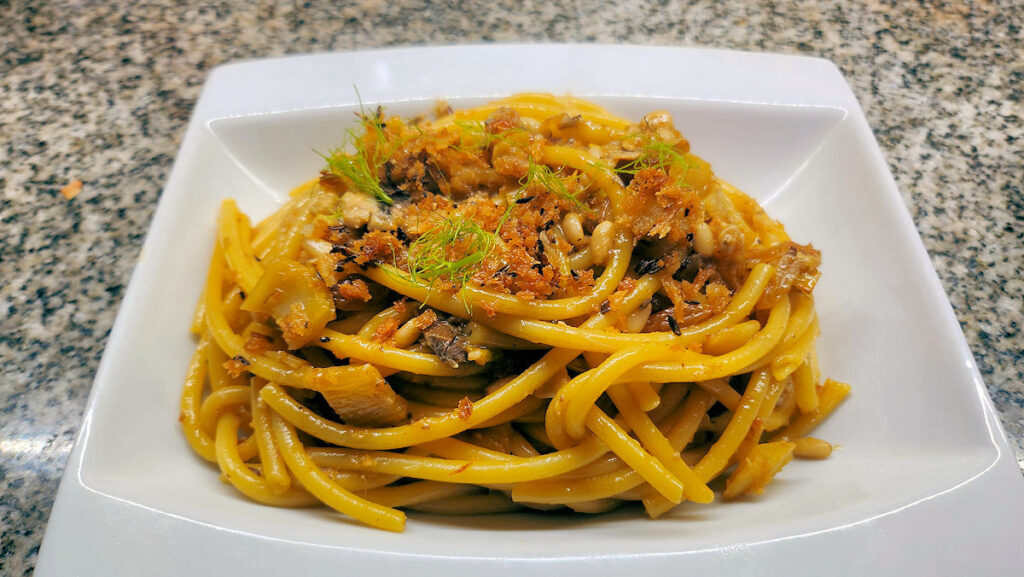
Recipes sound delicious. Too bad the writer left out a VERY IMPORTANT THING ABSOLUTELY NECESSARY TO EACH AND EVERY RECIPE….
THE AMOUNT (MEASUREMENTS) OF EACH AND EVERY INGREDIENT NECESSARY FOR EACH RECIPE). I have NEVER seen a recipe without the exact measurements for each and every ingredient. I would love to make one or two of these recipes, but I would need the amounts of each and every ingredient. I am a Sicilian American from all four of my grandparents and my grandfather from Palermo was the best cook of them all. He taught my mother how to cook (my grandmother was not a good cook so he did all the cooking) and she was a good cook also. I was taught by both. So. Where are all the necessary amounts to make ANY RECIPE? Would appreciate, so I could make ones that I like. Thank you in advance for your kind response to my question. Grazie, Jeanine Napoleon Goldman. My email address is as follows: jeaninenapoleon@aol.com
The writer, that would be me, doesn’t cook that way. And I’ll bet your grandparents didn’t either. It’s all to taste, and if you just look at the picture accompanying the text, you can see approximately how much of each item was used. And putting your opinions in all caps doesn’t make them any more forceful.